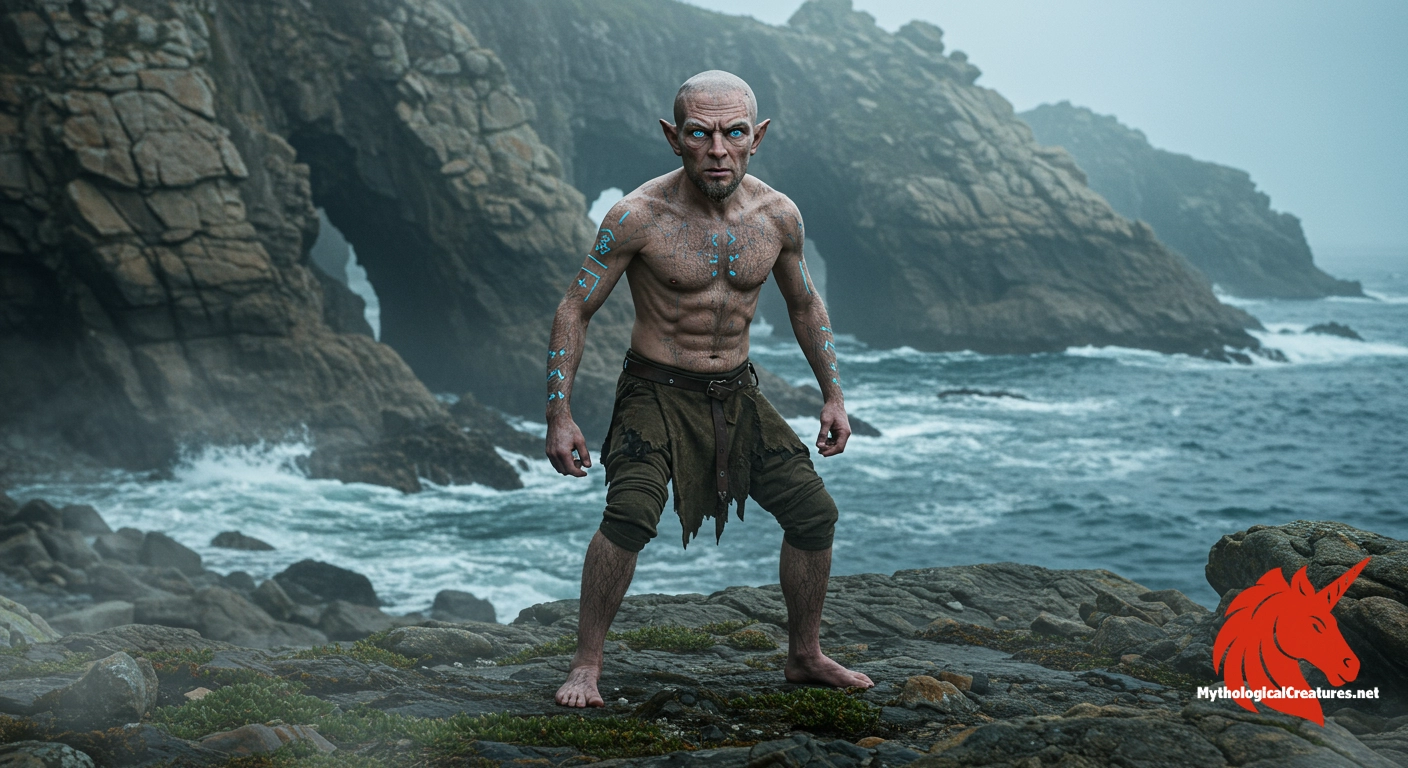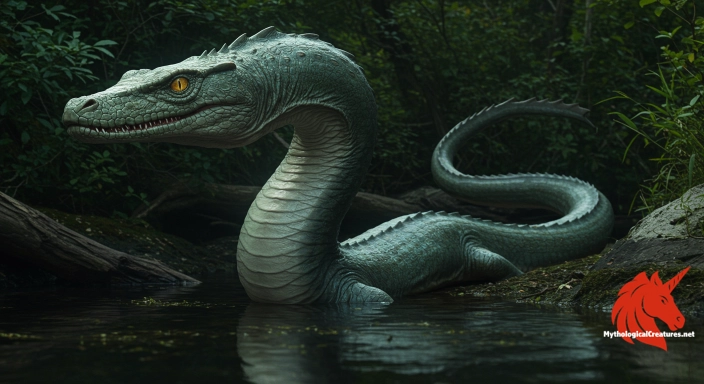Fions: Fions are lutin-like creatures of Upper Brittany, renowned for their military organisation and maritime habitat.

Fions
Fions - Fions embody a fascinating blend of martial discipline and folkloric enchantment, serving as both warriors and benefactors within Breton myth.
Origins & First Encounters
Fions are enigmatic, diminutive beings that inhabit the maritime folklore of Upper Brittany, where their mysterious origins have long intrigued local communities. Emerging from a blend of Celtic and possibly English influences, they have been woven into the fabric of coastal myth with an allure that defies simple explanation. Their first recorded appearances date back to the late 19th century, when folklorist Paul Sébillot gathered a wealth of captivating tales about these little people. They are depicted as both cunning and courageous, possessing qualities that merge the whimsical nature of fairies with the discipline of warriors. Their connection with rugged natural landscapes, such as rocky shores and hidden caves, underpins a narrative steeped in nature’s mystique. Over time, the Fions have come to symbolise not only a supernatural presence but also the spirit of resistance and mystery inherent in the region. Tales recount their communal lives and military order, which resonates deeply with the local seafaring and rugged coastal spirit. The intermingling of folklore and reality in their legends showcases an enduring enchantment that mirrors the ever-changing tides of the sea. Fions continue to represent a vital link between human experience and nature’s unpredictable magic, embodying both protection and mischief in equal measure.
Source Texts & Tale Variants
The lore of the Fions is primarily derived from the diligent collections of Paul Sébillot during the late 19th century, which provide the earliest testimonies of their existence. A multitude of maritime narratives were chronicled, each capturing different nuances of their character and lifestyle. These ancient texts portray the Fions as regimented soldiers serving the houles fairies, a detail that distinguishes them in the world of small mythical beings. Oral traditions have further enriched their myth, with coastal storytellers adapting and embellishing the tales over successive generations. Some accounts refer to them as custodians of enchanted objects and unique foods bestowed on unsuspecting humans. Variations in the stories include descriptions of their communal life and their mysterious campaigns, such as waging war on a golden ship. Over time, folkloric renditions have loaned additional layers of meaning that link them to themes of protection, mischief, and otherworldly governance. Modern reinterpretations, notably in the comic series Petrus Barbygère by Pierre Dubois and Joann Sfar, have added a contemporary twist to the traditional narratives. These diverse sources, from scholarly collections to modern artistic portrayals, ensure that the myth of the Fions remains as fluid and multifaceted as the coastal landscapes they are said to inhabit.
Form & Powers
Fions are typically envisioned as small, lutin-like creatures with a vivid mix of human and supernatural traits. Their diminutive stature belies a formidable presence, as they are often described as standing only a few inches to a foot tall yet radiating a potent energy. Distinctive features such as pointed ears and keen, sparkling eyes lend them a whimsical appearance, while subtle hints of ruggedness underscore their adaptation to harsh coastal environments. Clad in clothing that suggests military precision, they are often depicted wearing ornate yet practical attire that reflects both martial discipline and maritime aesthetics. Some tales hint at the presence of decorative insignia or small accouterments that symbolise their communal battalions. Their skin and facial expressions are sometimes described as weathered from the constant exposure to the salty sea air, though always imbued with a hint of mischief. The Fions’ attire and gear, blending elements of traditional Breton garb with fantastical military embellishments, further underscore their dual nature. Artistic depictions occasionally incorporate textures reminiscent of the rough stones and tidal patterns found along Brittany’s northern shores, effectively tying their appearance to the natural landscape. Overall, their physical attributes work collectively to evoke an image of beings who are at once endearingly small and surprisingly formidable.
Regional Faces
The folklore of the Fions is deeply rooted in the maritime milieu of Upper Brittany, where the rugged cliffs and secluded caves create a perfect backdrop for their legendary exploits. Local narratives present them as guardians of the coastal expanse, a role that distinguishes them from the more benign lutins encountered in interior regions. Across different Breton communities, subtle differences appear in their portrayal, with some emphasising their role as mystical defenders while others highlight their pastoral activities, such as grazing livestock. In addition to their strong Breton identity, hints of an English influence in certain variants suggest that their myth may have absorbed elements from neighbouring cultural traditions. This hybridisation has led to regional adaptations that enrich their character, blending martial precision with gentle generosity. Some coastal groups celebrate the Fions as part of their local heritage, inviting them into festivals and ceremonial practices that honour the spirit of the sea. Variations in storytelling have resulted in depictions where the Fions serve distinctly as military aides to the houles fairies, reinforcing a narrative of organised, almost regimented folklore. Each regional retelling draws on the unique features of its landscape and local cultural practices, ensuring that the Fions remain a dynamic and regionally resonant figure in myth. Their adaptation to local contexts underscores the fluid nature of folklore as it moves across both cultural and geographical boundaries.
Cultural Parallels
In the broader tapestry of European folklore, the Fions share striking commonalities with other legendary little people. Like the French lutins or the Irish leprechauns, they are celebrated for their diminutive size and their capacity to oscillate between benevolence and mischief. However, what sets the Fions apart is their distinctly martial orientation, as many stories detail their organised, battalion-like formations and their unique role as warriors of the coast. This element of disciplined combat introduces a rare blend of fairy-tale charm and military precision, resonating with other mythic traditions that feature organised groups of small yet formidable beings. Parallel figures in Germanic legends or Norse tales of battle-ready elves showcase similar dualities, though they generally lack the maritime focus that characterises the Fions. The recurrent motif of waging war on a golden ship further links them to broader themes found in seafaring myths across Europe, emphasising the symbolic interplay of wealth, magic, and martial prowess. Additionally, while many small folk are depicted purely as tricksters or helpers, the Fions bridge the gap by embodying both the capricious spirit of the fairies and the disciplined nature of ancient warriors. This comparative analysis illustrates a fascinating convergence of mythological archetypes where the blending of combat, magic, and regional identity creates a multifaceted persona that resonates across different cultural landscapes.
Legacy & Modern Evolution
The legacy of the Fions has undergone a remarkable evolution from the time of their early folkloric recordings to their contemporary portrayals in popular culture. Initially documented by collectors such as Paul Sébillot, these beings were portrayed as enigmatic military figures intertwined with maritime mysticism. Over subsequent generations, the myth of the Fions has been reimagined and adapted to fit the changing cultural narrative of Brittany and beyond. Modern interpretations, including their appearance in graphic literature like the Petrus Barbygère series, have infused a playful yet thoughtful dimension into their traditional image. This reinvention has allowed them to bridge the gap between historical myth and modern storytelling, making them accessible to new audiences while retaining their enigmatic charm. Their depictions have expanded to include a range of artistic styles, from classical folklore illustrations to dynamic, contemporary comic art. The evolution of their image reflects broader trends in myth-making, where timeless legends are continually reshaped by the shifting landscapes of art, culture, and regional identity. Today, the Fions stand as enduring symbols of Breton resilience and maritime mystery, celebrated both in academic circles and popular cultural events. Their story is a vivid reminder of how folklore can adapt and survive, echoing the ebb and flow of cultural memory across centuries.
Interesting Fact
One of the most intriguing aspects of Fions is their dual nature: they combine strict military organisation with the whimsical traits of fairy folklore, making them both formidable warriors and unexpected benefactors.
Quick Creature Info
Features:
Our Mythic Legendary Rating:

Habitat:
Supernatural Powers:
Physical Attributes:
Abilities:
Behavior:
Lore:
Related Creatures, Tales or Lore
- LLutins
- PPixies
- BBrownies
References
Discover Another Mythical Legend You May Not Have Heard Of?
Uncover the mysteries of ancient folklore and expand your knowledge of legendary beings from cultures around the world.
Dare to Meet the Atosis....
Mythical Disclaimer: The images and data on this site are derived from various historical and literary sources, but we have found that many myths often have multiple versions and interpretations across references, sometimes contradictory. As a result, these creature depictions are artistic interpretations—imaginative blends of folklore, legend, and a dash of AI guesswork. Because creature descriptions vary widely, our illustrations and accompanying information represent our best effort to honor mythology while bridging creative gaps. Enjoy these interpretations—just remember, we've done our best to respect the stories and validate available data, but in the realm of mythology, details often shift, imagination leads the way, and nothing is ever set in stone!
Curated by the Mythological Creatures Team (rev. May 2025)
